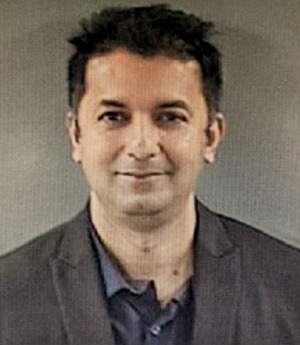Near-Infrared Imaging for Detecting Dental Caries

Two and three-dimensional radiographs are commonly used for evaluating sub-surface hard structures of teeth, but they have low sensitivity for early caries lesions, particularly those on tooth occlusal surfaces, and they are also frequently refused by patients over safety concerns. Near-infrared imaging offers a non-ionizing alternative for dental analysis. We describe the construction and validation of a near-infrared imaging device to identify dental caries without the use of 2D radiographs. It uses 850 nm light, allowing for a low-cost sensor and device construction.
Why is this work important?
While two-dimensional radiographs are the current standard of care for diagnostic dental imaging, they have low sensitivity for early caries lesions, particularly those on tooth occlusal surfaces. They are also frequently refused by patients over safety concerns about exposure to ionizing radiation. Medical image acquisition without ionizing radiation can expand the use of important diagnostic tools and decrease safety concerns.
What has been done before?
NIR light can be transmitted across healthy dental enamel with marginal scattering, allowing for imaging dental features. Much previous work has focused on light at 1310 nm, which strikes a balance between enamel and water attenuation, but such a wavelength often requires expensive sensors to image. NIR light at 850 nm has similar dental imaging properties, but it has not been studied as thoroughly as NIR at 1310 nm. Previous studies have similarly neglected the extent to which indicators of dental health, especially early caries associated with the onset of more severe conditions, can be identified in 850 nm NIR images.
What are our contributions?
We describe the construction of a near-infrared imaging device to identify dental caries without the use of radiographs. Light-emitting diodes at 850 nm allow for the use of a low-cost imaging sensor. Its camera-wand design allows for multiple imaging configurations: reflectance, transillumination, and occlusal transillumination. We validate the diagnostic uses for the images produced by our device, determining that they provide insight into the location of caries without ionizing radiation. The camera-wand system was also capable of revealing demineralized areas, deep and superficial cracks, and other clinical features of teeth usually only visualized by X-rays.
What are the next steps?
Analyze the extent of features made visible by our device and to model the interaction and scattering of light inside teeth and tissues to provide even more diagnostic power.


Dr. Pratik Shah
Faculty Member
Other Contributors
Keith Angelino, Technical Associate
Dr. David Edlund, DMD